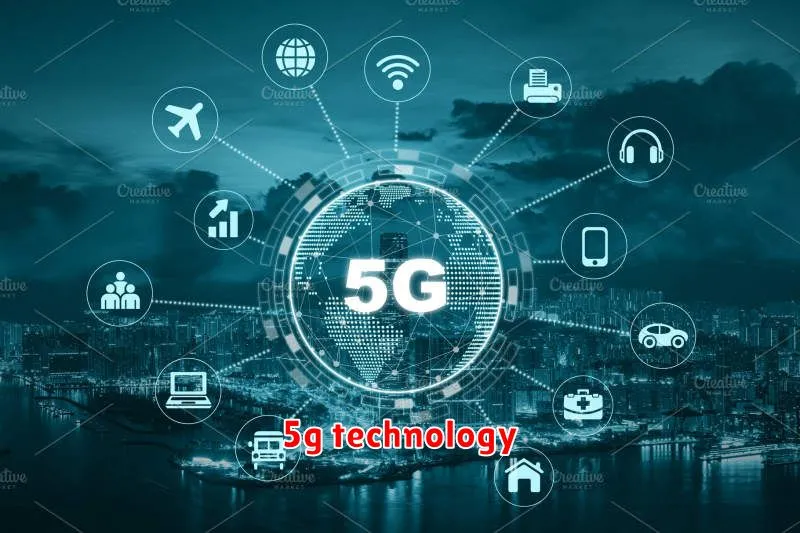Prepare to be amazed as we delve into the revolutionary world of 5G, a game-changer in the realm of wireless technology. This cutting-edge network is poised to transform our lives in ways we never imagined, unlocking a universe of possibilities that were once deemed science fiction. From blazing-fast internet speeds that redefine online experiences to innovative applications that reshape industries, 5G is more than just an upgrade; it’s a catalyst for a technological revolution.
With its incredible speed, low latency, and massive connectivity capabilities, 5G is set to redefine how we work, learn, play, and connect. Imagine seamless virtual reality experiences, real-time remote surgery, and autonomous vehicles navigating our cities with ease. These are just a glimpse of the transformative power that 5G holds, and we’re on the cusp of witnessing its full potential unfold.
Understanding 5G Technology: A Paradigm Shift in Connectivity
The advent of 5G technology marks a significant leap forward in wireless communication, ushering in a new era of connectivity with unparalleled speed, latency, and capacity. This paradigm shift promises to revolutionize how we interact with the world around us, impacting diverse sectors from telecommunications and healthcare to manufacturing and transportation.
To understand the transformative power of 5G, it’s crucial to grasp its key attributes. 5G networks are designed to deliver significantly faster data speeds compared to their predecessors, with peak download speeds reaching up to 20 Gbps. This enhanced speed enables seamless streaming of high-definition videos, rapid file transfers, and real-time applications like virtual reality and augmented reality.
Another defining feature of 5G is its low latency, which refers to the time delay between sending and receiving data. This reduced latency is crucial for applications that require instant response, such as autonomous driving, remote surgery, and industrial automation. With 5G, these applications can operate more reliably and efficiently, enhancing safety and productivity.
Furthermore, 5G boasts a remarkable increased capacity, allowing more devices to connect to the network simultaneously. This feature will be vital for accommodating the growing number of connected devices, including smartphones, wearables, and Internet of Things (IoT) sensors. As our dependence on wireless connectivity expands, 5G’s ability to handle a surge in devices ensures a seamless and reliable experience for all.
In conclusion, 5G technology represents a paradigm shift in connectivity, offering unprecedented speed, latency, and capacity. Its transformative potential extends far beyond faster internet access, paving the way for innovative applications and a future where our interconnected world operates with unprecedented efficiency and intelligence.
Key Advancements in 5G: Speed, Latency, and Capacity
The advent of 5G technology has ushered in a new era of connectivity, promising transformative advancements across various sectors. At the heart of this revolution lie key improvements in speed, latency, and capacity, collectively unlocking unprecedented possibilities for businesses and individuals alike.
Speed: 5G boasts significantly faster download and upload speeds compared to its predecessors. This is achieved through the use of higher frequency bands, such as millimeter wave (mmWave), which offer wider bandwidth and faster data transmission rates. The theoretical maximum speed for 5G networks is around 20 Gbps, though real-world speeds may vary based on factors like network congestion and device capabilities. This dramatic increase in speed opens doors for seamless streaming, lightning-fast downloads, and real-time applications previously unimaginable.
Latency: Latency refers to the delay between sending and receiving data. 5G significantly reduces latency, achieving ultra-low figures in the range of milliseconds. This is made possible through advancements in network architecture, such as the adoption of massive MIMO (multiple-input, multiple-output) technology and shorter network paths. Lower latency is crucial for applications demanding real-time responsiveness, such as virtual reality (VR), augmented reality (AR), and remote surgery.
Capacity: 5G networks are designed to handle a massive increase in connected devices, enabling a denser and more robust network infrastructure. This enhanced capacity is achieved through the use of advanced techniques like network slicing, which allows for the allocation of network resources to specific applications and users based on their requirements. Increased capacity is essential for supporting the exponential growth in connected devices, including smart homes, wearables, and autonomous vehicles.
The Impact of 5G on Businesses and Industries
The advent of 5G has ushered in a new era of connectivity, promising to revolutionize businesses and industries across the globe. With its lightning-fast speeds, low latency, and enhanced capacity, 5G is poised to unlock a plethora of transformative opportunities, driving innovation and efficiency to unprecedented levels.
For businesses, 5G represents a significant catalyst for growth and competitiveness. By enabling real-time data analytics, remote collaboration, and the deployment of advanced technologies such as artificial intelligence (AI) and the Internet of Things (IoT), 5G empowers organizations to optimize operations, improve decision-making, and create new revenue streams.
Across various industries, 5G is poised to have a profound impact. In manufacturing, it facilitates the adoption of smart factories, enabling automated processes, predictive maintenance, and enhanced supply chain management. In healthcare, 5G supports remote surgery, telemedicine, and real-time patient monitoring, improving access to care and patient outcomes. In transportation, 5G enables the development of autonomous vehicles, intelligent traffic management systems, and connected infrastructure, enhancing safety and efficiency.
The transformative power of 5G extends beyond individual industries, creating a ripple effect across the global economy. As businesses leverage 5G capabilities, new jobs are created, economic growth is stimulated, and society as a whole benefits from increased productivity and innovation.
However, realizing the full potential of 5G requires overcoming challenges. The development of a robust 5G infrastructure, the integration of 5G technologies with existing systems, and the upskilling of the workforce are crucial steps in ensuring successful 5G adoption.
Despite these challenges, the future of 5G is bright. As technology matures and applications evolve, 5G will continue to shape the future of businesses and industries, driving unprecedented levels of innovation, efficiency, and economic growth.
Enhanced Mobile Broadband: Next-Generation User Experiences
The advent of 5G technology has ushered in a new era of mobile connectivity, promising unparalleled speeds, low latency, and enhanced capacity. At the forefront of this revolution lies Enhanced Mobile Broadband (eMBB), a key pillar of 5G that is poised to transform user experiences in unprecedented ways.
eMBB leverages the vast bandwidth and improved spectral efficiency of 5G to deliver blazing-fast download and upload speeds. This translates into seamless streaming of high-definition video, lightning-fast file transfers, and effortless multi-device connectivity. Imagine downloading a movie in seconds, playing online games without lag, or attending virtual meetings with crystal-clear video and audio.
Beyond speed, eMBB empowers users with unparalleled mobility. The increased capacity of 5G networks allows for seamless connection transitions between cell towers, ensuring uninterrupted connectivity even in crowded areas. This opens up new possibilities for mobile gaming, immersive virtual reality experiences, and real-time collaboration applications.
The low latency offered by eMBB further enhances user experiences. With near-instantaneous response times, users can enjoy lag-free online gaming, real-time video conferencing with minimal delays, and interactive applications that were previously impossible. This opens up a world of possibilities for industries like healthcare, education, and transportation.
eMBB is not just about faster speeds; it’s about creating a new generation of mobile experiences. By leveraging the power of 5G, eMBB is poised to redefine how we interact with the digital world, opening up new avenues for innovation and connecting users in ways never before imagined.
Ultra-Reliable Low-Latency Communications: Enabling Mission-Critical Applications
The evolution of 5G technology goes beyond just faster internet speeds. One of its most transformative capabilities lies in ultra-reliable low-latency communications (URLLC). This groundbreaking advancement opens doors for a wide range of mission-critical applications that demand unwavering reliability and near-instantaneous response times.
URLLC ensures that data transmission is virtually error-free, even in challenging environments. This characteristic is crucial for applications where even a single dropped packet could have catastrophic consequences. Moreover, its low latency, measured in milliseconds, enables real-time interactions and control, bridging the gap between the physical and digital worlds.
Here are some examples of how URLLC is revolutionizing mission-critical applications:
- Autonomous Vehicles: URLLC enables self-driving cars to communicate with each other and infrastructure in real-time, allowing for safe navigation and collision avoidance.
- Remote Surgery: Surgeons can remotely operate on patients with minimal delay, thanks to URLLC’s ability to transmit high-definition video and control signals with precision.
- Industrial Automation: URLLC facilitates seamless communication between robots, machines, and control systems in factories, enabling faster and more efficient production processes.
- Smart Grid: URLLC allows for real-time monitoring and control of power grids, enhancing reliability and resilience against disruptions.
- Emergency Response: First responders can access critical information and communicate effectively in emergency situations, leading to faster and more efficient interventions.
The potential of URLLC extends beyond these examples, impacting various industries and aspects of our lives. As 5G technology matures and URLLC capabilities become more widespread, we can expect to witness a surge in innovative and life-changing applications that were previously unimaginable.
Massive Machine-Type Communications: Powering the IoT Revolution
The Internet of Things (IoT) is poised to revolutionize our world, connecting billions of devices and enabling unprecedented levels of automation and intelligence. At the heart of this revolution lies massive machine-type communications (mMTC), a key enabler of 5G technology that empowers the seamless connectivity of vast numbers of low-power, low-bandwidth devices.
mMTC allows for the efficient communication of massive numbers of devices, such as sensors, actuators, and smart appliances, without overwhelming the network. This capability opens up a world of possibilities, enabling the realization of smart cities, connected healthcare, precision agriculture, and industrial automation.
Key features of mMTC that contribute to its transformative potential include:
- High device density: mMTC can accommodate millions of devices in a single cell, enabling the connectivity of a dense network of sensors and actuators.
- Low-power operation: Devices can operate for extended periods on minimal power consumption, extending their lifespan and reducing energy consumption.
- Low data rates: mMTC caters to the low-bandwidth needs of most IoT devices, optimizing network resources for efficient communication.
- Simplified connectivity: mMTC streamlines the onboarding process for IoT devices, allowing for easy integration and management.
The ability to connect massive numbers of devices with minimal resource consumption and streamlined management is a game-changer for IoT applications. mMTC is driving the adoption of connected solutions across various sectors, enabling unprecedented levels of efficiency, automation, and intelligence.
5G in Healthcare: Transforming Patient Care and Telemedicine
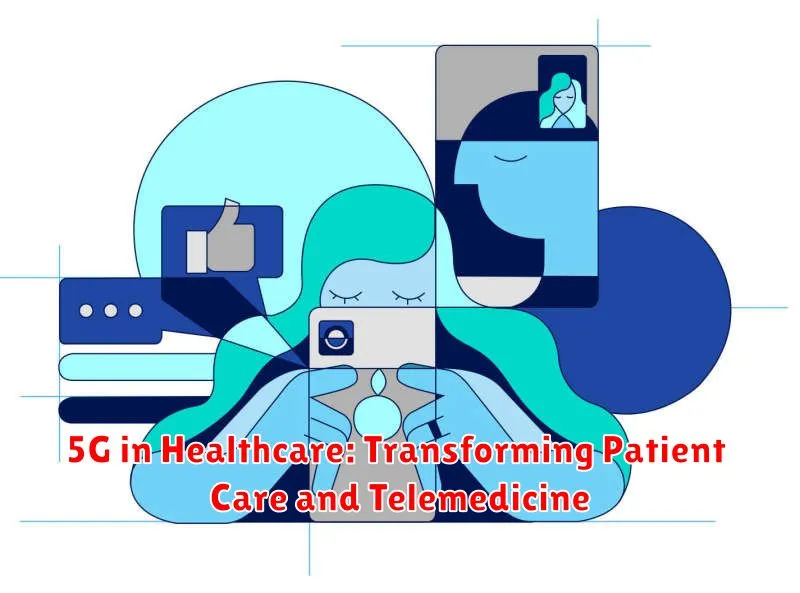
The advent of 5G technology is poised to revolutionize the healthcare industry, ushering in a new era of connected and personalized patient care. With its unparalleled speed, low latency, and increased bandwidth, 5G enables groundbreaking advancements in telemedicine, remote patient monitoring, and medical data analysis.
Telemedicine, the delivery of healthcare services remotely using technology, is set to benefit significantly from 5G. The ultra-fast speeds and low latency of 5G networks allow for real-time transmission of high-quality video and audio, enabling physicians to conduct virtual consultations and perform remote surgeries with greater precision. This is particularly beneficial in underserved areas and for patients with limited mobility.
Remote patient monitoring is another area where 5G is transforming healthcare. 5G-enabled devices, such as wearables and home-based sensors, can continuously collect vital signs and other health data, providing healthcare professionals with real-time insights into patient well-being. This allows for proactive interventions and early detection of potential health issues, leading to better outcomes and reduced hospital readmissions.
Moreover, 5G facilitates the analysis of vast amounts of medical data, enabling the development of artificial intelligence (AI)-powered tools for diagnosis, treatment planning, and drug discovery. The speed and efficiency of 5G networks allow for quicker processing of complex medical data, leading to faster and more accurate diagnoses and personalized treatment plans.
In conclusion, 5G is a game-changer for healthcare, empowering providers with innovative tools to deliver better, more accessible, and personalized care. From telemedicine to remote monitoring and AI-powered diagnostics, 5G is unlocking a new era of healthcare innovation, improving patient outcomes and transforming the healthcare landscape.
5G in Manufacturing: Enabling Smart Factories and Industry 4.0

The rise of 5G technology is ushering in a new era of connectivity and automation, particularly in the manufacturing sector. With its lightning-fast speeds, low latency, and high bandwidth, 5G is revolutionizing how factories operate, paving the way for smart factories and Industry 4.0.
Smart factories are highly automated, data-driven facilities that leverage advanced technologies like 5G to optimize production, enhance efficiency, and improve quality. 5G empowers these factories by enabling:
- Real-time data exchange: 5G’s low latency allows for seamless communication between machines, sensors, and human operators, facilitating faster decision-making and real-time adjustments.
- Remote control and monitoring: 5G enables remote control and monitoring of industrial processes, allowing engineers and technicians to manage operations from anywhere in the world.
- Advanced robotics and automation: With its high bandwidth, 5G supports the deployment of sophisticated robots and automated systems, enabling complex tasks and collaborative work.
- Predictive maintenance: 5G facilitates the collection and analysis of real-time data from machinery, allowing manufacturers to predict potential failures and implement preventive measures.
By facilitating these advancements, 5G is driving the realization of Industry 4.0, a paradigm shift in manufacturing characterized by interconnectedness, automation, and data-driven decision-making. 5G empowers manufacturers to:
- Boost productivity: Optimized processes and reduced downtime lead to increased production output.
- Enhance quality: Real-time monitoring and data analysis allow for precise control and improved product quality.
- Reduce costs: Automation and efficiency gains lower operational expenses.
- Increase flexibility: Smart factories can adapt to changing market demands and production requirements.
The transformative power of 5G is poised to reshape the manufacturing landscape, driving innovation and fostering a new generation of intelligent factories. As 5G networks continue to expand, we can expect even more exciting applications and advancements in the years to come.
5G in Transportation: Revolutionizing Connected and Autonomous Vehicles
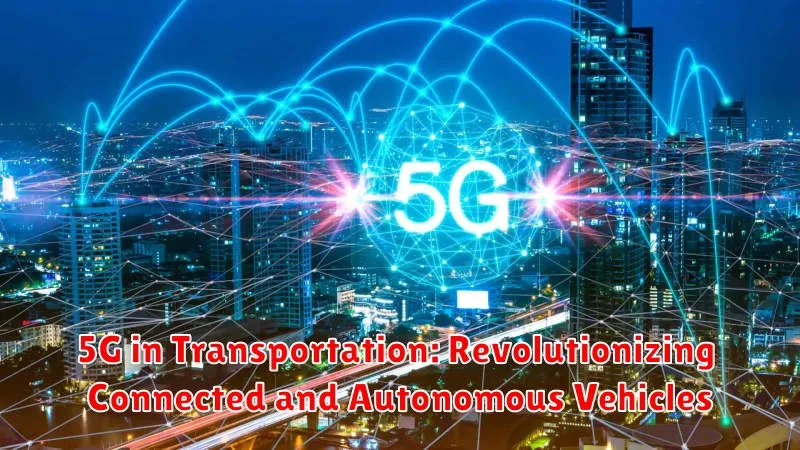
The advent of 5G technology is poised to revolutionize the transportation industry, paving the way for a future of connected and autonomous vehicles. With its unparalleled speed, low latency, and high bandwidth, 5G promises to transform how we drive, ride, and manage transportation systems.
Enhanced Connectivity for Connected Vehicles
5G’s robust connectivity empowers connected vehicles (CVs) with real-time data exchange, enabling a plethora of safety and convenience features. CVs can communicate with each other, infrastructure, and pedestrians, fostering a safer and more efficient driving environment.
Powering Autonomous Vehicle Development
Autonomous vehicles (AVs) heavily rely on real-time data processing and communication, making 5G a crucial enabler. The high bandwidth and low latency of 5G ensure seamless data transfer for critical functions like sensor data analysis, obstacle detection, and navigation.
Smart Traffic Management
5G facilitates smart traffic management systems by enabling communication between vehicles, traffic lights, and infrastructure. This results in optimized traffic flow, reduced congestion, and improved overall efficiency.
Transforming Public Transportation
5G is set to enhance public transportation systems by enabling real-time tracking of buses, trains, and other vehicles. This facilitates improved scheduling, reduced delays, and enhanced passenger experience.
Conclusion
5G’s transformative power is poised to revolutionize the transportation sector, fostering a future of connected and autonomous vehicles. With its enhanced connectivity and data processing capabilities, 5G paves the way for safer, more efficient, and convenient transportation systems. As 5G deployment continues to expand, we can anticipate a significant shift in the way we experience mobility.
5G in Entertainment: Immersive Experiences and Streaming Innovation
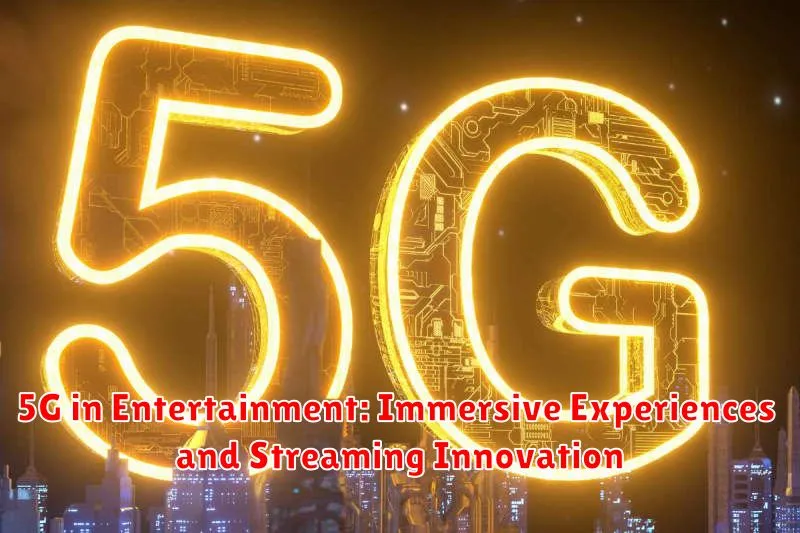
The entertainment industry is undergoing a dramatic transformation, driven by the advent of 5G technology. 5G’s lightning-fast speeds, ultra-low latency, and massive bandwidth capabilities are unlocking a new era of immersive experiences and streaming innovation. From virtual reality (VR) and augmented reality (AR) to cloud gaming and live event streaming, 5G is empowering creators and consumers alike to interact with entertainment in unprecedented ways.
Immersive Entertainment: 5G’s low latency is a game-changer for VR and AR experiences, eliminating lag and creating seamless interactions. This opens up a world of possibilities for immersive gaming, interactive storytelling, and even virtual concerts. Imagine attending a concert in a virtual world, interacting with other attendees and feeling the energy of the crowd. 5G will make such experiences truly realistic and engaging.
Streaming Innovation: 5G is revolutionizing how we consume entertainment. With its high bandwidth, 5G enables streaming of ultra-high-definition (UHD) and 4K content without buffering or interruptions. This allows for a more immersive and enjoyable viewing experience. Furthermore, 5G empowers the development of new streaming platforms and services, offering personalized and interactive content tailored to individual preferences.
Cloud Gaming: 5G is making cloud gaming a reality. With its fast speeds and low latency, 5G eliminates the need for powerful gaming consoles or high-end PCs. Players can access and enjoy high-quality gaming experiences directly from their mobile devices or any internet-connected device. This opens up a whole new market for mobile gamers and makes gaming accessible to a wider audience.
Live Event Streaming: 5G is transforming the way we experience live events. 5G-powered live streaming platforms allow viewers to immerse themselves in events, whether it’s a sporting match, a music festival, or a theatrical performance, as if they were right there in the venue. This technology provides real-time, high-quality visuals and audio, creating an interactive and engaging viewing experience.
In conclusion, 5G is ushering in a new era of entertainment, empowering creators to push boundaries and offering consumers unprecedented levels of immersion and engagement. As the 5G ecosystem continues to develop, we can expect even more exciting and transformative advancements in the world of entertainment.
The Future of 5G: Advancements, Challenges, and Opportunities
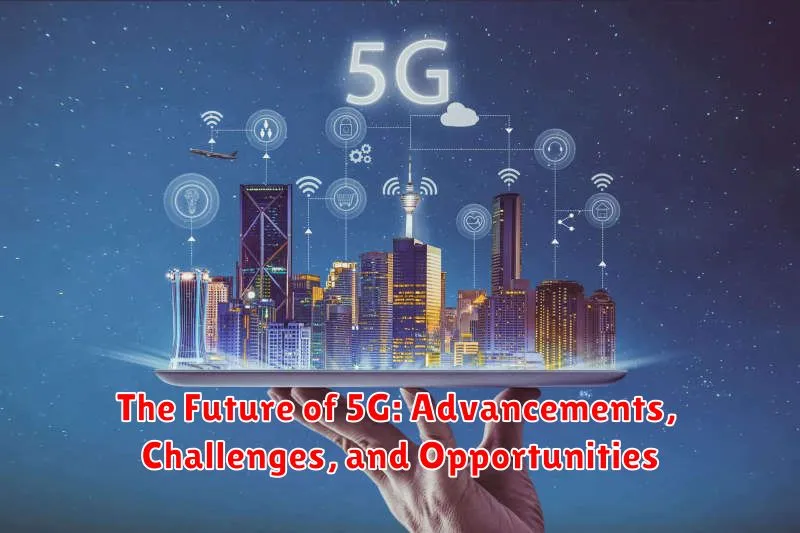
The emergence of 5G technology has ushered in a new era of connectivity, promising transformative advancements across various sectors. As we delve deeper into the 5G landscape, it’s crucial to examine the key advancements, challenges, and opportunities that lie ahead.
Advancements in 5G technology are constantly pushing the boundaries of what’s possible. The next generation of 5G, known as 5G Advanced, is set to deliver even faster speeds, lower latency, and enhanced network capacity. This will empower the development of innovative applications and services in areas such as autonomous vehicles, virtual and augmented reality, and the Internet of Things (IoT).
However, the journey towards realizing the full potential of 5G isn’t without challenges. Spectrum availability and cost-effective infrastructure deployment remain significant hurdles. Ensuring security and privacy in a highly connected world is also paramount, requiring robust solutions to mitigate potential vulnerabilities.
Despite these challenges, the opportunities presented by 5G are vast. Its ability to connect billions of devices and deliver real-time data transfer will revolutionize industries like healthcare, manufacturing, and education. The economic benefits of 5G are expected to be substantial, creating new jobs and driving innovation.
As we move forward, collaboration among governments, industry players, and research institutions is essential to overcome the challenges and capitalize on the opportunities presented by 5G. By fostering a conducive environment for innovation, we can unlock the transformative power of this groundbreaking technology and shape a more connected and prosperous future.

